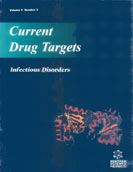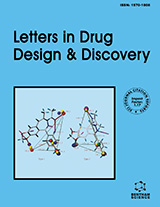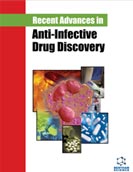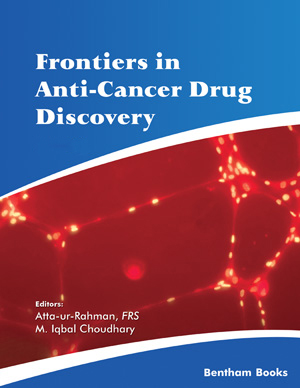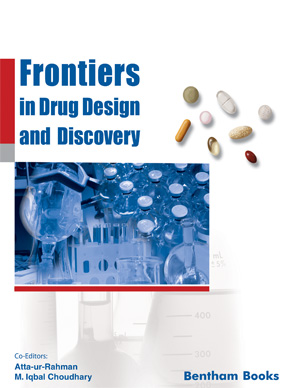Abstract
Familial Mediterranean fever (FMF, MIM24900), described as a clinical entity only slightly over a half-century ago, has ancient roots among populations surrounding the Mediterranean basin. It is the most prevalent of the hereditary periodic fever syndromes, a group of disorders characterized by episodic attacks of fever and inflammation. Seven years ago, it was discovered that FMF is caused by mutations in MEFV, a gene that encodes a protein variously called pyrin or marenostrin. As exciting as that discovery was, physicians and patients alike were disappointed that the protein sequence of pyrin/marenostrin did not immediately suggest clues as to the molecular etiology of FMF. Though we are still far from a complete understanding of the function of pyrin/marenostrin at the cellular level, continued study of this intriguing protein is revealing new molecular details about inflammatory processes; the emerging information is relevant not only to FMF, but to innate immunity in general. Data from several laboratories demonstrate that pyrin/marenostrin is intimately connected to three important cellular pathways: apoptosis, cytoskeletal signaling and cytokine secretion. These connections occur, at least in part, through the direct interaction of the pyrin/marenostrin protein with two cytosolic protein adaptors: ASC (also called PyCARD or Tms1) and PSTPIP (also called CD2BP1). Here, we review the more recent literature regarding the molecular and cellular biology of pyrin/marenostrin and pinpoint open questions for future study.
Keywords: pyrin, inflammation, apoptosis, cytoskeleton, periodic fever, cytokine secretion
Current Drug Targets - Inflammation & Allergy
Title: Familial Mediterranean Fever in the Post-Genomic Era: How an Ancient Disease is Providing New Insights into Inflammatory Pathways
Volume: 4 Issue: 1
Author(s): Philip E. Schaner and Deborah L. Gumucio
Affiliation:
Keywords: pyrin, inflammation, apoptosis, cytoskeleton, periodic fever, cytokine secretion
Abstract: Familial Mediterranean fever (FMF, MIM24900), described as a clinical entity only slightly over a half-century ago, has ancient roots among populations surrounding the Mediterranean basin. It is the most prevalent of the hereditary periodic fever syndromes, a group of disorders characterized by episodic attacks of fever and inflammation. Seven years ago, it was discovered that FMF is caused by mutations in MEFV, a gene that encodes a protein variously called pyrin or marenostrin. As exciting as that discovery was, physicians and patients alike were disappointed that the protein sequence of pyrin/marenostrin did not immediately suggest clues as to the molecular etiology of FMF. Though we are still far from a complete understanding of the function of pyrin/marenostrin at the cellular level, continued study of this intriguing protein is revealing new molecular details about inflammatory processes; the emerging information is relevant not only to FMF, but to innate immunity in general. Data from several laboratories demonstrate that pyrin/marenostrin is intimately connected to three important cellular pathways: apoptosis, cytoskeletal signaling and cytokine secretion. These connections occur, at least in part, through the direct interaction of the pyrin/marenostrin protein with two cytosolic protein adaptors: ASC (also called PyCARD or Tms1) and PSTPIP (also called CD2BP1). Here, we review the more recent literature regarding the molecular and cellular biology of pyrin/marenostrin and pinpoint open questions for future study.
Export Options
About this article
Cite this article as:
Schaner E. Philip and Gumucio L. Deborah, Familial Mediterranean Fever in the Post-Genomic Era: How an Ancient Disease is Providing New Insights into Inflammatory Pathways, Current Drug Targets - Inflammation & Allergy 2005; 4 (1) . https://dx.doi.org/10.2174/1568010053622803
| DOI https://dx.doi.org/10.2174/1568010053622803 |
Print ISSN 1568-010X |
| Publisher Name Bentham Science Publisher |
Online ISSN 1568-010X |
 22
22Related Articles
-
Diabetes and Vascular Disease: Basic Concepts of Nitric Oxide Physiology, Endothelial Dysfunction, Oxidative Stress and Therapeutic Possibilities
Current Vascular Pharmacology Recent Advances in Carbon Nanotubes as Delivery Systems for Anticancer Drugs
Current Medicinal Chemistry Butyrate and Colorectal Cancer: The Role of Butyrate Transport
Current Drug Metabolism Cytokines and their Antagonists as Therapeutic Agents
Current Medicinal Chemistry Gene Regulation of Aldose-, Aldehyde- and a Renal Specific Oxido Reductase (RSOR) in the Pathobiology of Diabetes Mellitus
Current Medicinal Chemistry The Contribution of Proteinase-Activated Receptors to Intracellular Signaling, Transcellular Transport and Autophagy in Alzheimer´s Disease
Current Alzheimer Research Chemical and Biochemical Basis of Cell-Bone Matrix Interaction in Health and Disease
Current Chemical Biology Prostaglandin EP Receptor Subtypes Involved in Regulating HCO3- Secretion from Gastroduodenal Mucosa
Current Pharmaceutical Design Nanotechnology can Provide Therapeutic Agent by Targeting Molecular Structures of SARS-CoV-2 (COVID-19): A Mini-Review
Letters in Drug Design & Discovery Alzheimer’s Disease-like Early-phase Brain Pathogenesis: Self-curing Amelioration of Neurodegeneration from Pro-inflammatory ‘Wounding’ to Anti-inflammatory ‘Healing’
Current Alzheimer Research Patenting on New Topical Anti-Inflammatory Drug
Recent Patents on Inflammation & Allergy Drug Discovery Protective Effect of Metformin, Resveratrol and Alpha-lipoic Acid on Radiation- Induced Pneumonitis and Fibrosis: A Histopathological Study
Current Drug Research Reviews Editorial (Mini-Thematic Issue: Mold Allergens and Antigenic Epitopes Correlation with Fungal Diseases)
Current Protein & Peptide Science A Role for TGF-β Signaling in Neurodegeneration: Evidence from Genetically Engineered Models
Current Alzheimer Research Statins Therapy may Change a Course of Lung Fibrosis and Pulmonary Hypertension: A New Indication for Therapy or Just “Statinomania”?
Current Respiratory Medicine Reviews Olive Oil and Haemostasis: Platelet Function, Thrombogenesis and Fibrinolysis
Current Pharmaceutical Design The Effect of Potato Almond Orange Cookies on their Weight, BMI, Hemoglobin, and Lymphocyte Status of Undernourished Older People during COVID-19 Pandemic
Current Nutrition & Food Science Receptor Guided 3D-QSAR Analysis of Thieno[2,3-b]Pyridine-5- Carbonitrile Inhibitors of Protein Kinase C Theta (PKC-θ )
Combinatorial Chemistry & High Throughput Screening Modulation of the Peripheral and Central Inflammatory Responses by a-Melanocyte Stimulating Hormone
Current Protein & Peptide Science Nucleolar Dominance: A David and Goliath Chromatin Imprinting Process
Current Genomics


